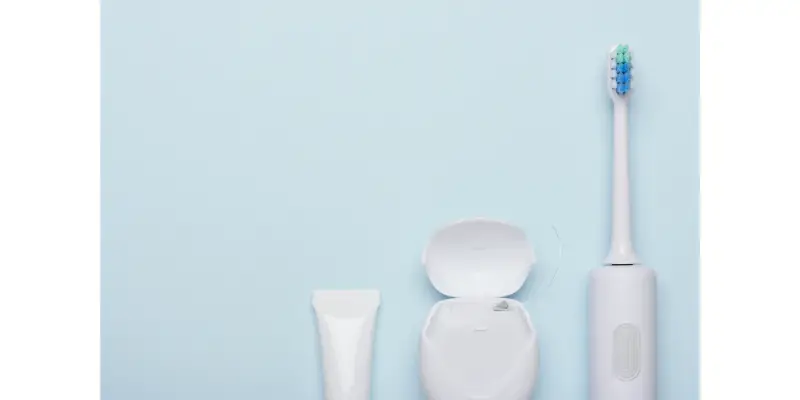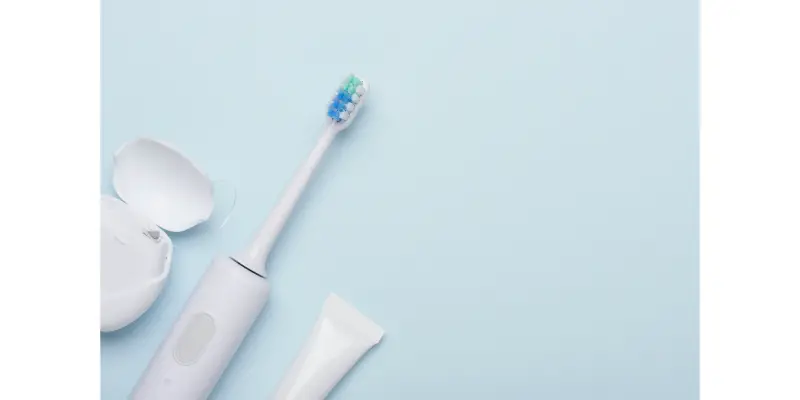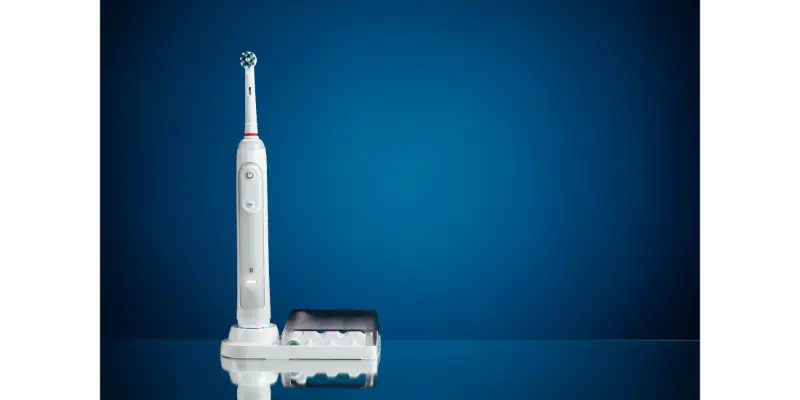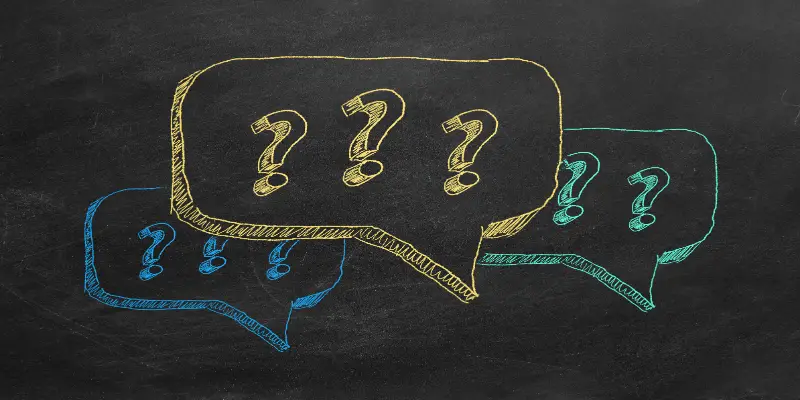Disclaimer: This post may contain affiliate links, meaning we get a small commission if you make a purchase through our links, at no cost to you. For more information, please visit our Disclaimer Page.
There has been a growing popularity of electric toothbrushes every year. This has been due to many people believing these brushes can make teeth cleaner than manual ones. However, the big question is, do electric toothbrushes wear out?
Electric toothbrushes do wear out when you use them for a longer duration. This can lead to their bristles ripping off and thus leaving an inefficient toothbrush for perfect oral health. Still, you can opt to replace your brush to avoid getting bacterial infections.
These toothbrushes can be more costly compared to manual brushes. Though they are effective when it comes to cleaning your teeth and gums. Additionally, electric brushes have features like clocked pulses, letting you know when to move to a different part of your mouth.
It is therefore important that you understand your electric brush if you have one or you’re planning to buy. You need to know its lifespan, the right time to replace it, how to disinfect it, and also the procedure you can use to clean it. I’ll take you through all these and many more, so stay tuned!
Table of Contents
How Long Do Electric Toothbrushes Last?
A typical lifespan of electric toothbrushes is between three to five years. Some firms do give money back if you are not content with the product you bought from them. And the time limit relies on the company. Some can accept returns within two months.
They also have a warranty and may even go up to two years. This is in the event the brush is faulty, hence a buyer can send it to them to get another toothbrush. The period in which an electric brush lasts can depend on the way you treat, use, and store yours.
If you take proper care of a toothbrush then this also lengthens its lifespan. Besides, In case you’re eager to get much from your brush, you need to care for it by cleaning, charging, and preventing it from getting destroyed. You also need to discharge your brush at times.
When you use it and then take it back on a stand for recharging this can be so wasteful. You have to understand that a battery always has a maximum amount of charging sequences it is created to last. With an older battery, it will require recharge many times and this makes it so ineffective.
Sometimes back, it was recommended that the brush be entirely discharged and recharge its battery. However, this is not the case these days. It is always favorable for the battery to be a hundred percent charged.
Then use the brush till the battery goes low and proceed to charge it once more. Ensure you avoid getting it flat or to zero percent. If it is possible you can remove it from the charging system when you are still using it.
You can even choose to charge it when it is around twenty percent. This may help extend the lifespan of the brush and its battery too. There are some toothbrush batteries with status lights that will turn red to show it needs a recharge and is situated on the handle.
You can be on the look for it as this is the correct time for you to plug in your brush for recharge. In some instances, you may want to avoid frequent topping up of the battery. This implies you target using most of the power remaining before setting it to recharge.
Therefore, there are lots of variables and you won’t be sure how long your brush will survive by practicing topping up. Though this slight act may as well lead to additional months of its usage.
How Do You Know When Your Electric Toothbrush Is Dying?
You may know your toothbrush is dying when you face some instances like the toothbrush not being able to recharge. Also, it may stop charging completely. However, this does arise when a brush has been utilized for many years.
You need to confirm the energy outlet that you’re using is functioning well. You can plug in another electronic device to check if the outlet is working after unplugging your brush. If it switches on, then your brush may be the problem.
What Can Prevent an Electronic Brush From Charging?
A Defective Charger
There can be power but a green light symbolizing charging does not blink even after leaving your toothbrush on a charger for over ten minutes. This may mean there is an issue since the charger might have stopped working. The simplest way you can test your charger is to try to charge the toothbrush by using a different charger.
Ensure it is compatible if you can get it. Some manufacturers do accept the return of a charger if you purchased it and it doesn’t work. You can get your faulty charger replaced or you get paid back the purchase price.
A Memory Effect
This often occurs when a partly discharged battery gets charged. The battery only recalls a smaller percentage of the charge it gets. This, therefore, signifies it is holding a tiny fraction of the charge.
Thus, this leads to the battery not getting charged anymore in case this is done more often. This situation may still be rectified if it is happening in the initial stages. You need to allow your battery to get drained and then proceed to charge it fully.
To make sure the battery is totally out of the power source, you need to use your brush, that is, even if it is having very low energy. Do this until it stops automatically. Take note that this factor is not yet acknowledged or has not been confirmed by the electric brushes’ manufacturers.
Though some believe it is so real and it does happen.
A Bad Battery
The batteries do have a specific working life span. The moment it reaches the wear and tear period, it cannot react to charging or it’ll not hold on to the charge. Those who use their toothbrushes for a longer duration do encounter this a lot.
Still, you do not have to discard your brush for this reason. When your battery is dying, it doesn’t imply the electric toothbrush will no longer work.
How Often Should You Disinfect Your Toothbrush?
It is important that you disinfect and then clean your toothbrush regularly. This helps in maintaining exceptional oral hygiene. Failure to disinfect a toothbrush will lead to harboring of bacteria, other microbes, and contaminants from the body.
Also, a thorough rinse after you brush under running water will help clear debris and the other elements. You can then store the brush in an upright position in an open place. And most importantly, avoid sharing your brush since you may spread bacteria and other microbes with the members of your family.
How Do You Disinfect an Electric Toothbrush?
There are some techniques you can use to disinfect your toothbrush. Each method is unique and when you are done with disinfection, you can ensure you keep your brush clean.
Use a Mouthwash
Soaking a toothbrush in an antibacterial mouthwash can be of help if you aren’t content with rinsing in hot water. This technique entails allowing a toothbrush to stand with the head down in a mug of mouthwash. This can be for a few minutes after every brush.
However, take note that this method may lead to your toothbrush wearing out faster. And it’s because a mouthwash does have intense ingredients which may result in the breaking down of the bristles.
Consider Running Hot Water Over Your Toothbrush
You can do this before using the toothbrush and also afterward. This is the most fundamental technique for disinfecting your brush and you can opt for it. Ensure you run the water over its bristles.
This will remove bacteria that might have accumulated on the brush in the duration between tooth brushing. It also eradicates recent bacterial collection after using it. For the majority of people, the use of hot and clean water is sufficient to disinfect a brush.
Furthermore, before you apply some toothpaste, ensure you gently run water over the toothbrush’s head. Make sure the water is hot enough and generates steam. After brushing, you can also rinse it with some more water.
Take note that you don’t have to boil the brush to clean it as required. Its plastic-made handle may begin melting down in boiling water. And if you still feel like boiling it, you can heat some water in the water heater.
After boiling, turn it off and then dip the toothbrush in the water for a few seconds.
Try an Ultraviolet Sanitizer
You can opt for an ultraviolet sanitizer for a toothbrush. Ensure you follow the guide from the manufacturer where you acquire this type of toothbrush sanitizer.
Use an Artificial Teeth Cleansing Solution
This is composed of an antimicrobial ingredient and it targets plague and bacteria accumulating in the mouth. Ensure you do not reuse the solution you had already used before. Drop the toothbrush in it for seconds to ensure the brush is cleaner.
Cleaning an Electric Toothbrush
You need to clean your toothbrush after disinfecting it. Here’s a process you can use to clean it;
Mix Bleach and Water
You can mix up everything in a container large enough so you can dip the head of your toothbrush. Consider doing this every month as it is a way of deep cleaning a toothbrush. Take a smaller amount of bleach and much more water, ten times the amount of bleach.
Ensure you put on gloves as they will help you prevent skin irritation when handling bleach. Still, you can use hydrogen peroxide or a plain mouthwash if you don’t want to use bleach.
Soak The Head of Your Brush
Soak your toothbrush’s head for 60 minutes. Therefore, you have to set your timer. Ensure you completely immerse its head in the mixture.
This will help do both cleaning and disinfecting of your brush. Hence, you’ll be able to do away with any bacteria or germs. Make sure you do not leave the brush for over one hour since the bleach is strong enough even after it is diluted.
Also, keep the container away from pets and children.
Rinse It Properly
Remove your brush’s head from the mixture and then rinse it. You can do this until you confirm the water turns clear and the brush doesn’t have a bleaching scent. It is not right to use a brush having residues of bleach.
Wipe the Head and Dry It
Using a clean cloth wipe off the head of your brush and then place it in the bathroom or on the counter to allow it to dry. This will prevent any mildew or mold from growing on your brush. Besides, a moist toothbrush can result in slimy substances forming on its handle.
Clean the Handle Using a Fabric Having Bleaching Water
First, ensure you unplug the brush before beginning the cleaning process of its handle. Put on your gloves and proceed to dip the cloth in the bleach water. Then use it to rub the body of the toothbrush.
Concentrate on the sections having water buildup or mold.
Wipe the Metal Part Connected to the Head
The majority of electric toothbrushes heads are detachable. If yours is like this, then there is a tiny metal part that sticks upwards. This section can collect tons of bacteria and water, thus it is crucial to use a fabric to wipe it well.
And if this isn’t good enough, you can use a cotton swab. Dip it in a bleaching liquid and use it to reach the gaps. Besides, if your brush has an awful smell and you can’t understand the reason causing it, then it may be mold in this section.
Clean the Brush’s Base
Many electronic brushes have a charging area at their bases and can also amass toothpaste and water. You can use a clean cloth to tidy this part. Wipe the top and lowermost part of the base.
Avoid outlet parts and cables. To maintain it as clean as possible for some time, you can wipe it anytime it appears wet. This keeps off mildew and mold.
Dry the Handle
Proceed to wipe the handle first before you put back the head. Use a cloth to dry it up. There can be mildew and mold if there is moisture trapped on it.
Therefore you must dry the handle whenever it becomes wet. Also, you shouldn’t immerse the body of your toothbrush in water as it can cause shock from electricity.
How Often Do You Need To Replace an Electric Toothbrush?
You need to replace a toothbrush between three to four months or anytime it seems to wear out. This is according to the Centers for Disease Prevention and Control (CDC). The moment its bristles begin to lose stiffness it means your brush is ready for replacement.
And without the bristles that can brush plague and food, your brush soon loses efficiency. A toothbrush is the first source of protection against bacteria causing bad breath, tooth decay, and gum disease. A clean and easy to hold handle plus upright bristles are perfect to help clean those tinier areas in the mouth.
If your brush has softer bristles you can well remove bacteria and food residues that may accumulate around your teeth’ bases. Also, following the routine advice of brushing for 120 seconds, twice in a single day, implies you are already protecting your teeth. For instance, it can be a protection against cavities.
Additionally, when you brush your teeth after every meal, this is an additional precaution too. You’re averting tooth decay. If you brush twice a day or even more this is also regarded as a standard for the toothbrush.
With this, the bristles in a toothbrush may start dropping off. They may get twisted in ninety days and thus needs replacement.
What Happens If You Don’t Change Your Toothbrush?
If you do not change your brush when you’re supposed to, there can be lots of serious dental health impacts. By now you should be aware that a toothbrush cannot last eternally. Though it can be so hard to realize when one is almost hitting its time.
Some consequences arise from not changing a toothbrush and thus warranting an immediate replacement. Let’s take a look at them;
Your Teeth Can Have Plaque
Have you ever heard of plague? Or rather, do you know what it is? This is a colorless and sticky sheet of bacteria that covers your teeth.
When you brush your teeth more often, you’ll be able to prevent the plague from remaining on your teeth. And with an old brush, bristles become less effective as they are frayed. An outworn toothbrush will not function well and the plague covering remains on your teeth.
Causes Sickness
Even though you may not get sick at times, it is an awful possibility. Failure to change your brush when it is essential may result in you getting sick. Even though the likelihood of getting re-infected with either flu or cold is minimal bacterial infections can be more recurrent.
Keeping a toothbrush in a similar casing together with your partner’s can lead to the spreading of infections.
Mold May Grow on Your Toothbrush
Keeping your brush in a concealed container may seem realistic since you are trying to protect it from getting germs. However, this isn’t the right way of storage. In the absence of natural drying, your toothbrush may grow mold.
For this reason, even keeping a brush in your shower isn’t a good option. It is also advised that you beware of black marks on the toothbrush, this may imply it has got mold.
Your Gums Can Get Damaged
You may get gum inflammation which is always referred to as gingivitis. This is an infection that occurs on gums and it relates to the plague. When you use an old brush, you won’t get rid of some of the plague.
And if it remains unchecked, then it can change to tartar. This is mineral buildup and it can destroy gums. In case of gingivitis is not dealt with on time, the gums may detach from the teeth and can even result in loss of teeth.
Conclusion
Just like the other manual toothbrushes, electric ones do wear out too. Besides, a toothbrush is a piece of vital oral hygiene equipment. To protect your brush and to make much from its lifespan, you need to use your brush the correct way.
You also need to store it in an upright posture to allow the recommended air drying. You can replace it as required and do this for your family members too. Ensure you note somewhere the date you bought it as this will help you know when it’s right to do a replacement.




